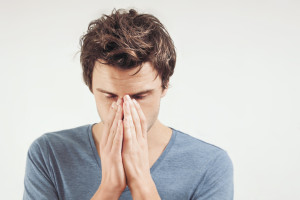- Calls to this hotline are currently being directed to Within Health or Eating Disorder Solutions
- Representatives are standing by 24/7 to help answer your questions
- All calls are confidential and HIPAA compliant
- There is no obligation or cost to call
- Eating Disorder Hope does not receive any commissions or fees dependent upon which provider you select
- Additional treatment providers are located on our directory or samhsa.gov
Boys and Bulimia
Contributor: Michael Pertschuk, MD, Medical Director of the Eating Disorders Program at Brandywine Hospital

Possibly there really are more males with bulimia. Alternatively, we are now more ready to recognize eating disorders among males and the affected males are more likely to step forward for help.
How Gender Changes Bulimia
The basic symptoms of binge eating and purging are the same for males and females with bulimia, but there are gender differences. Onset of bulimia is said to be later, in the 20’s for males. This may be an artifact rather than a true difference.
Males may just come to the attention of mental health specialists later. Family physicians and pediatricians are much more attune to the risk of eating disorders among their female patients. They may overlook similar signs in males.
Adolescent males tend to share less emotionally and are more reluctant to acknowledge mental health problems. Eating disorders are still judged in our society to be “female disorders” making it awkward for males to ask for help. Straight males can worry about being labeled as gay. Gay males may not be ready to “come out” if acknowledgment of an eating disorder might identify them as gay.
The Ideal of Thin vs. Buff

There is probably a higher percentage of homosexuals among male bulimics. Within the gay community pressures to achieve a certain “look” can be as great as females experience within the heterosexual community.
There is a parallel between the sexes as certain activities and sports fuel bulimia for both genders, the difference being the specific activities involved. Ballet and gymnastics are the classic problem pursuits for girls, wrestling and body building for boys. All these activities share an emphasis on weight and appearance.
How Treatment Differs Between Males and Females
Treatment for males, as with females, involves acceptance of more realistic goals for weight and appearance and help with following a healthier meal plan. In therapy males may less frequently deal with sexual trauma and more often with concerns around gender identity. Males also may need extra help learning to identify emotions and emotional triggers.
Research suggests that bulimia has the best outcome of the eating disorders. Males currently do as well as females and treatment for males is likely to get better. With more males in treatment there is the potential for males to support each other in groups and for therapists to learn better how to address their male clients’ specific needs.
Community Discussion – Share your thoughts here!
What steps can we take as an eating disorder community to better educate people about males with eating disorders? How can we take steps to encourage males to come forward and get help?
The opinions and views of our guest contributors are shared to provide a broad perspective of eating disorders. These are not necessarily the views of Eating Disorder Hope, but an effort to offer discussion of various issues by different concerned individuals.
Last Updated & Reviewed By: Jacquelyn Ekern, MS, LPC on March 21st, 2015
Published on EatingDisorderHope.com
